Worse-for-wear riverwalk a victim of total neglect
Advertisement
Read this article for free:
or
Already have an account? Log in here »
To continue reading, please subscribe:
Monthly Digital Subscription
$0 for the first 4 weeks*
- Enjoy unlimited reading on winnipegfreepress.com
- Read the E-Edition, our digital replica newspaper
- Access News Break, our award-winning app
- Play interactive puzzles
*No charge for 4 weeks then price increases to the regular rate of $19.00 plus GST every four weeks. Offer available to new and qualified returning subscribers only. Cancel any time.
Monthly Digital Subscription
$4.75/week*
- Enjoy unlimited reading on winnipegfreepress.com
- Read the E-Edition, our digital replica newspaper
- Access News Break, our award-winning app
- Play interactive puzzles
*Billed as $19 plus GST every four weeks. Cancel any time.
To continue reading, please subscribe:
Add Free Press access to your Brandon Sun subscription for only an additional
$1 for the first 4 weeks*
*Your next subscription payment will increase by $1.00 and you will be charged $16.99 plus GST for four weeks. After four weeks, your payment will increase to $23.99 plus GST every four weeks.
Read unlimited articles for free today:
or
Already have an account? Log in here »
Partway down my well-beaten path from West Broadway to The Forks, three boys bouncing along ahead of me, I feel a bit like Dorothy navigating Oz. The path ahead is lined with Winnipeg’s version of dancing poppies and flying monkeys: hazards, confrontations and ghostly spectres to which we’ve become perhaps far too accustomed.
We pass the park behind the Granite Curling Club, the one with Tyndall-stone shards of the original main branch of the post office, chipped and spray painted, upon which sits a shirtless man, smoking and disassembling a bike among the skeletons of several others.
The encampment there has spread up from the riverbank toward Granite Way. More campground than encampment, at what point do we declare something permanent?
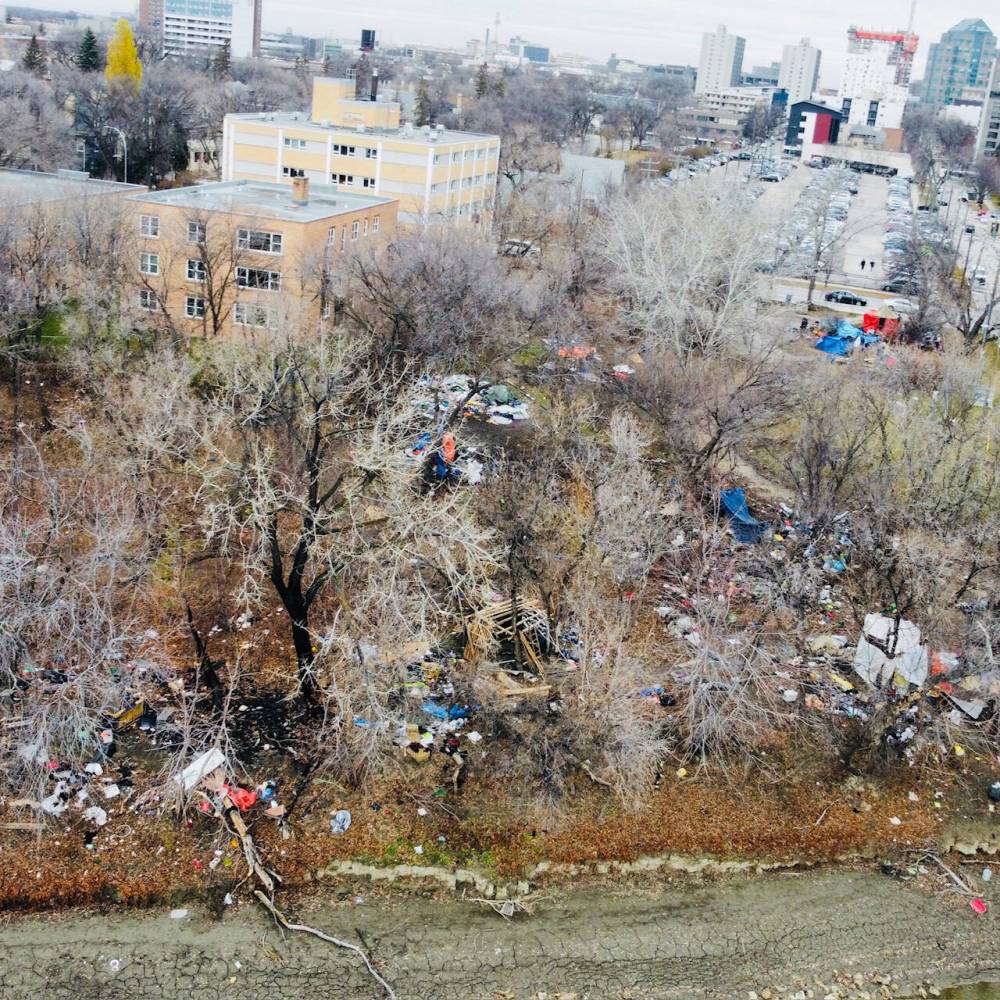
We pass the parking lot at the centre of a housing dispute.
Should we build places to live here, where folks are already living? No, some say. We need more parking.
Parking is needed directly across the street from the grotesquely immense Canada Life parking lot, the flattened remains of the historic homes of Whitehall Avenue.
We want parking, not homes. It’s a part of our heritage.
We cross Osborne and head down to the riverwalk. The Golden Boy looks north, and Louis Riel looks south, gripping the Métis bill of rights, with his back to the provincial government. The wire mesh benches are rusting.
Along the riverwalk, the limestone blocks lining the banks are fragmenting and collapsing. I recall walking this route myself as a child, wondering why there were tomato plants growing along the shore, stretching up from between these blocks.
Someone explained they were a byproduct of the sewage we dump in the river, because stomach acid doesn’t neutralize tomato seeds.
We pass someone washing their clothes along the shore.
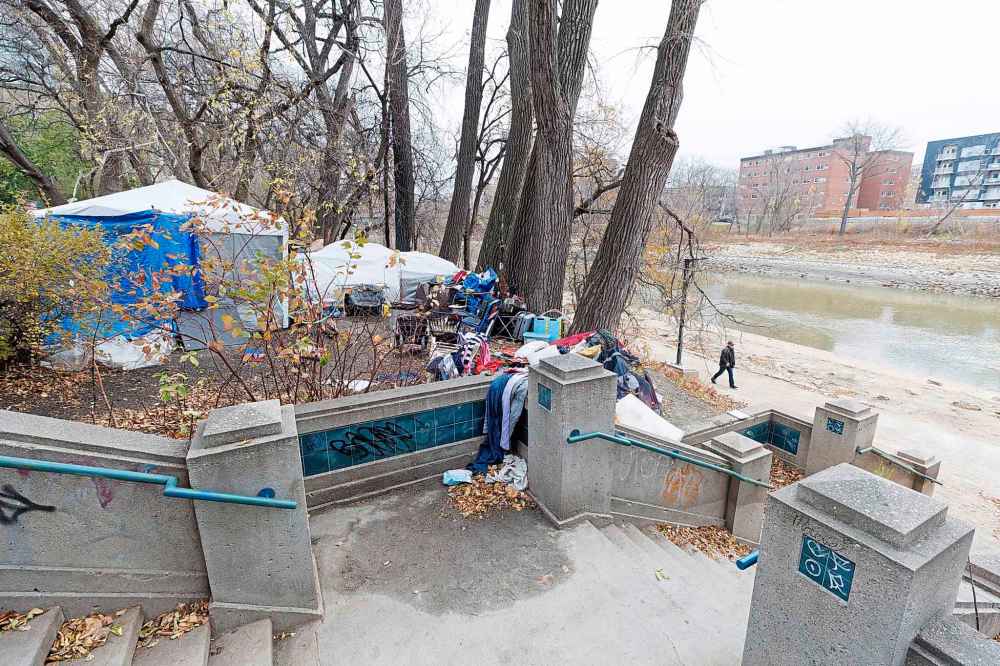
We pass the remains of benches — rotting wood at odd angles — the result of springtime flooding, the shifting riverbank and an absence of maintenance. More spray paint on Tyndall stone. More rust.
There used to be a plaque here. I wonder what it said.
The ruins of an outdoor amphitheatre are now on our left. The steps are broken. The benches are gone. Two pillars that once supported a roof above the stage are all that remain.
The grassy audience space is grown over with brush so thick it’s inaccessible. I marvel to think I once saw the Crash Test Dummies play here.
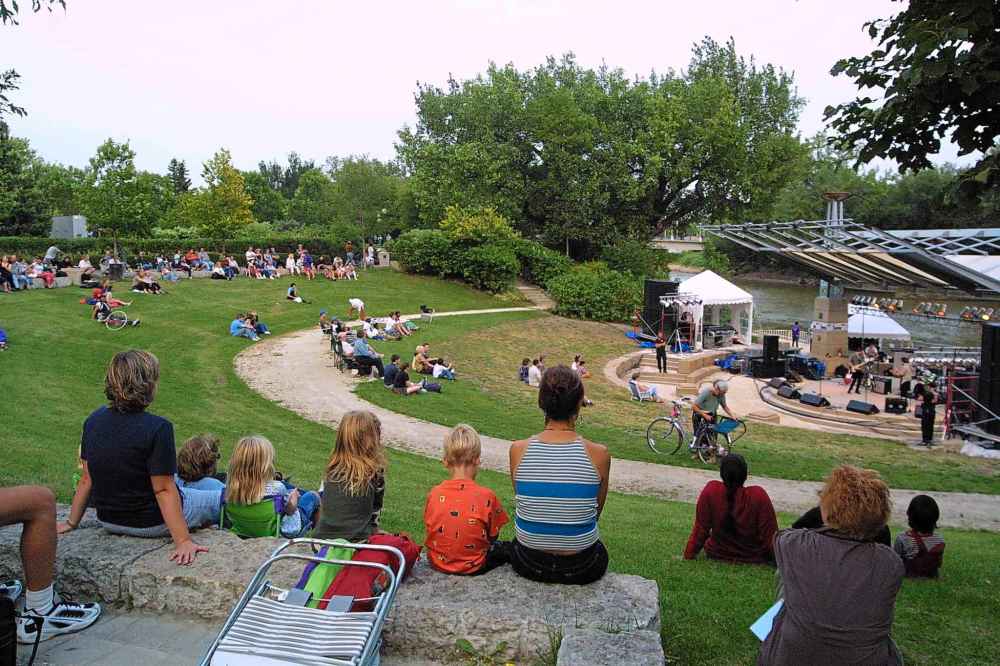
Beyond the empty flower urns at the top of the riverbank loom the towers of Fort Garry Place. The towers are crowned by the long-inoperable revolving restaurant from which we once could survey the inevitable decay creeping toward it in full panorama.
And always in the trees, between us and up to the road above, are people living in tents and improvised shelters. They sit in groups, surrounded by the limbs and bones of bicycles, chatting in the heat, ignoring us as we ignore them.
Another cultural tradition here. Pretend not to see. I wonder what the people on the river tours think of our city.
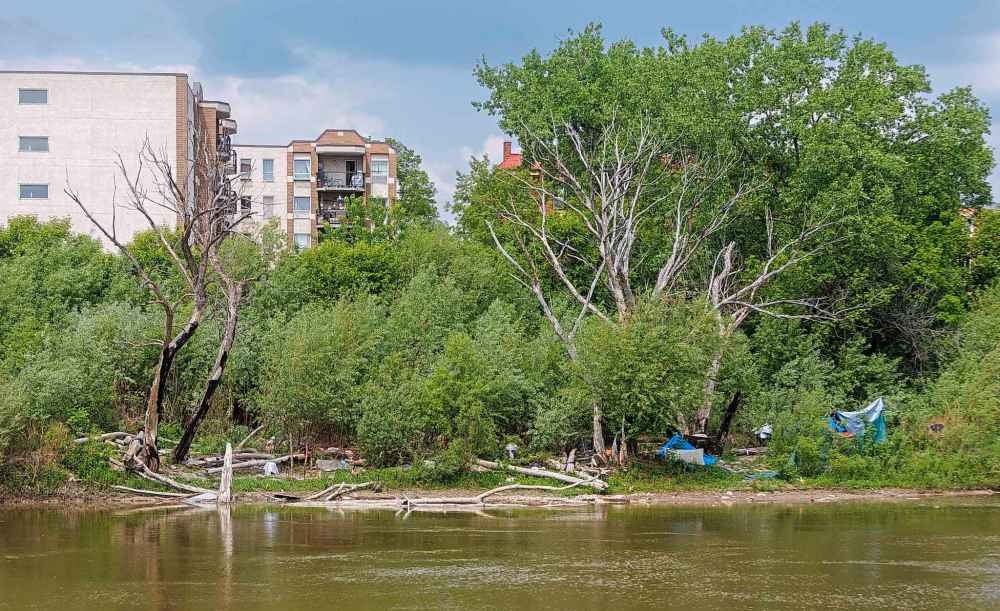
A sign is posted warning that the riverwalk is closed under the next bridge, but when we get there, the construction barriers have been kicked over, and cyclists ride over them.
I wonder how long they were going to leave the sign up — and how long it had already been there — and why they closed the river path to begin with.
Perhaps it’ll still be there, rusting away, years from now, like everything else.
And then The Forks, gleaming like the Emerald City, comes into view around the bend in the river. This is the place where Winnipeg has concentrated all of its courage, brain and heart.
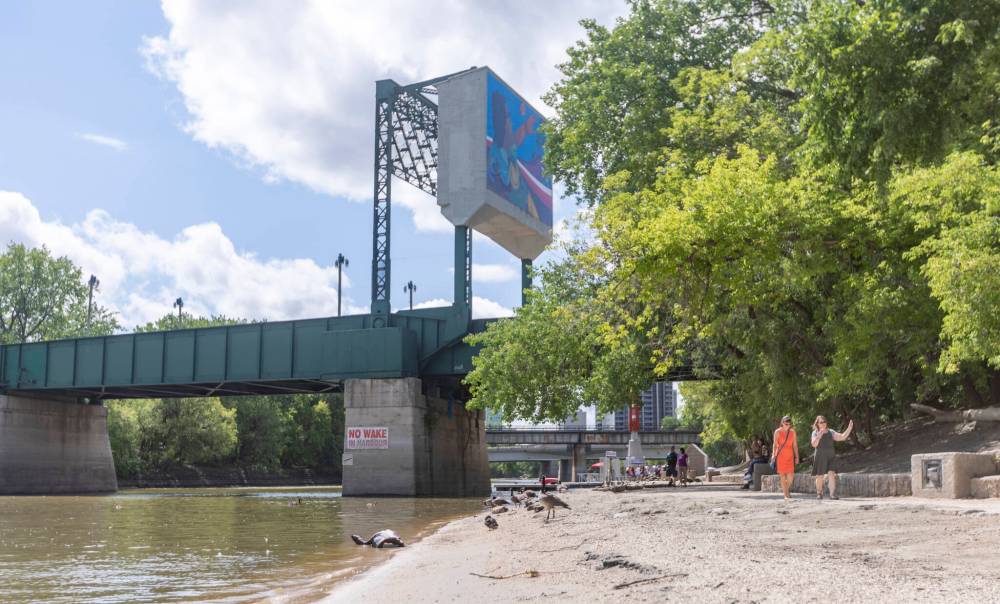
All the evidence for what our city could be is here.
Brave enough to take a risk, and loving enough to welcome all of us. Smart enough to evolve with the changing needs of Winnipeggers, The Forks is an enigmatically inimitable oasis of health in a grim urban centre.
Along the waterfront, a power boat unloads a family like mine. I briefly wonder what they might have seen on their own journey and what they tell their children about the shoreline.
Or do they, like the rest of us, pretend not to see? Instead we see only the Adirondack chairs embracing those sipping beers in the sunshine on an artificial beach; the dogs and kids and kayaks along the waterfront.
We grab lunch, play a few arcade games. I finally usher the kids through the ice cream line and we begin our return journey.
The kids aren’t ready to go yet, but even with refreshed courage, heart and brain, we can’t be caught travelling through Oz after the sun goes down.
rebecca.chambers@freepress.mb.ca

Rebecca explores what it means to be a Winnipegger by layering experiences and reactions to current events upon our unique and sometimes contentious history and culture. Her column appears alternating Saturdays.
Our newsroom depends on a growing audience of readers to power our journalism. If you are not a paid reader, please consider becoming a subscriber.
Our newsroom depends on its audience of readers to power our journalism. Thank you for your support.


